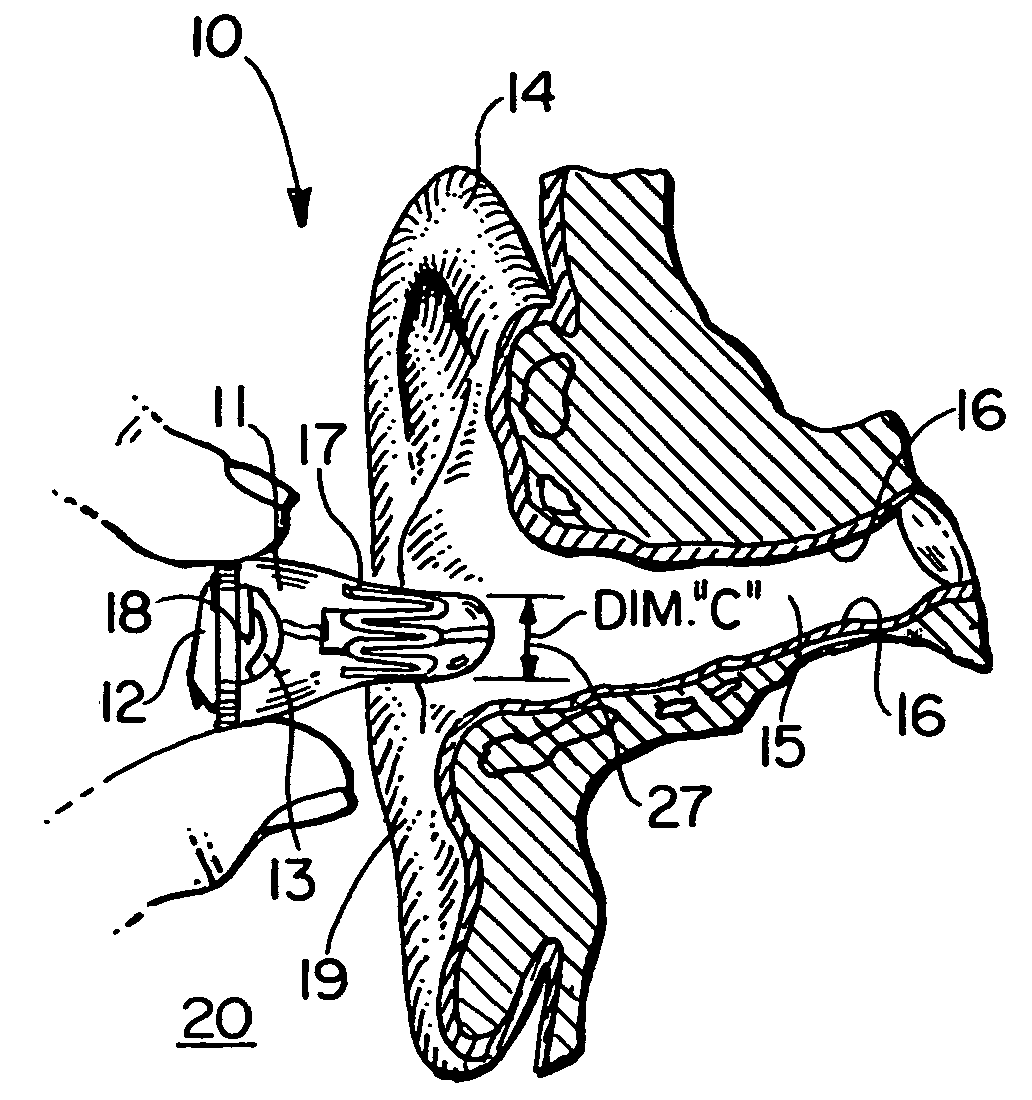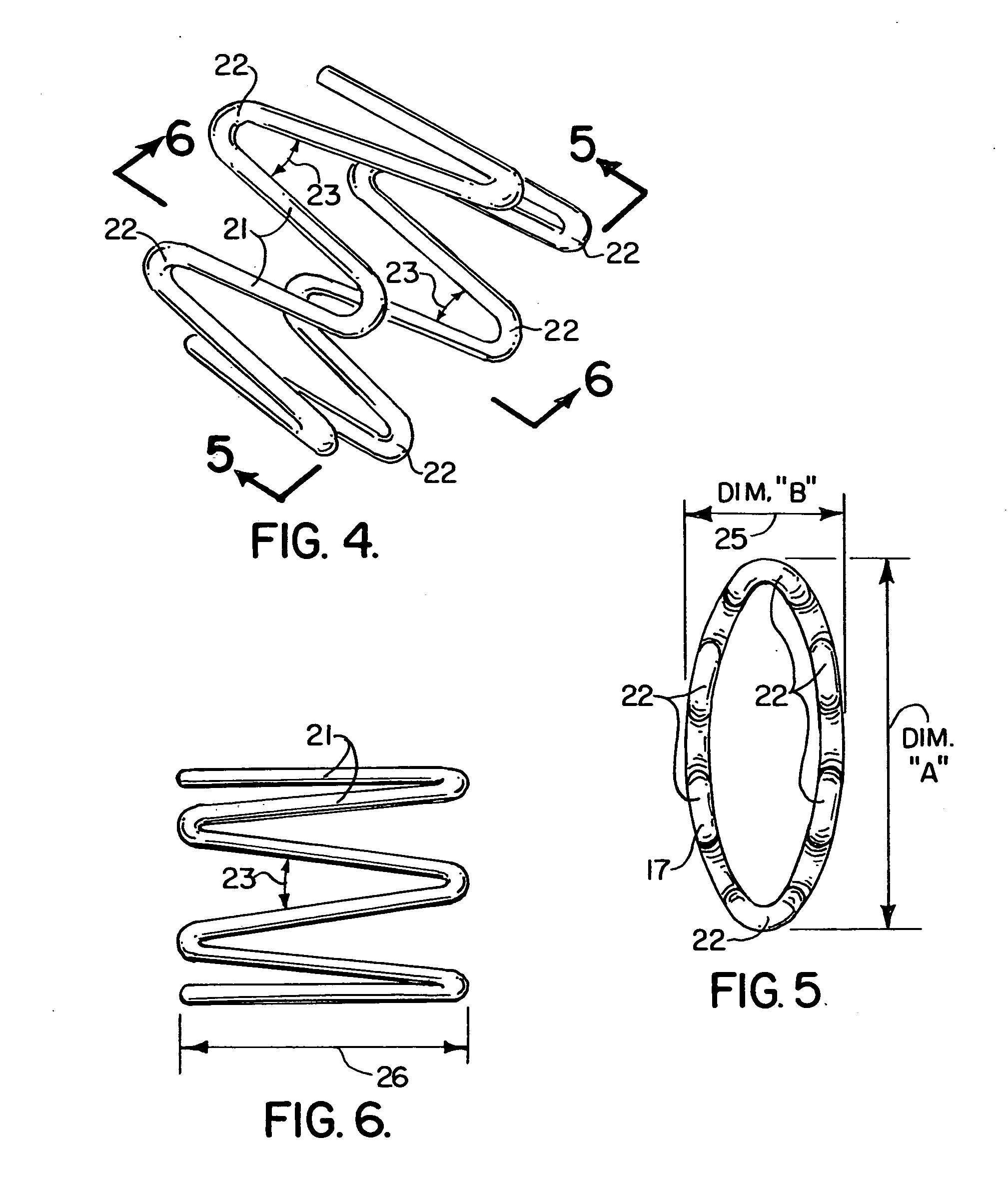Self forming in-the-ear hearing aid
- Summary
- Abstract
- Description
- Claims
- Application Information
AI Technical Summary
Benefits of technology
Problems solved by technology
Method used
Image
Examples
Embodiment Construction
[0063]FIGS. 1-3 show generally the preferred embodiment of the apparatus of the present invention, designated generally by the numeral 10. Hearing device 10 has an internal stent or frame 17 that expands to its pre-molded state at human body temperature. In FIGS. 1-3 the practical application of apparatus 10 is an in the ear worn hearing aid, an active hearing protector, or a combination hearing protector hearing device, a passive hearing protector, a communication device, or a combination communication hearing and hearing protector device, or any combination sub-miniaturized into a single unit. As used herein, the term “hearing aid” is broadly construed to cover any of the above devices. Dim. C (arrow 27) of FIG. 1 is the smallest diameter of the device 10 in the malleable Martensite phase. The Nitinol preferably used to construct stent 17 will preferably reside in this state at typical room temperature below 30° C. The same malleable state may exist in the absence of a power signa...
PUM
 Login to View More
Login to View More Abstract
Description
Claims
Application Information
 Login to View More
Login to View More - R&D
- Intellectual Property
- Life Sciences
- Materials
- Tech Scout
- Unparalleled Data Quality
- Higher Quality Content
- 60% Fewer Hallucinations
Browse by: Latest US Patents, China's latest patents, Technical Efficacy Thesaurus, Application Domain, Technology Topic, Popular Technical Reports.
© 2025 PatSnap. All rights reserved.Legal|Privacy policy|Modern Slavery Act Transparency Statement|Sitemap|About US| Contact US: help@patsnap.com



